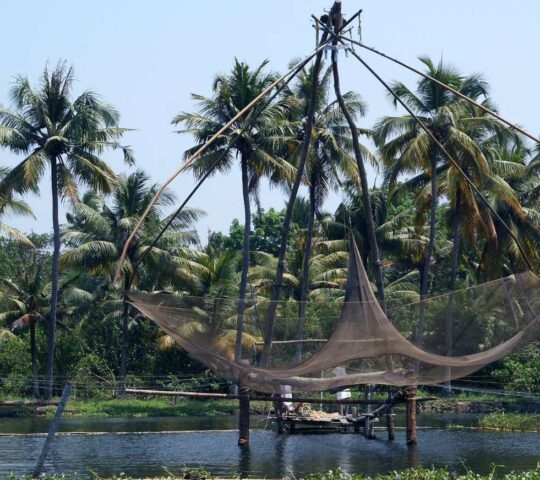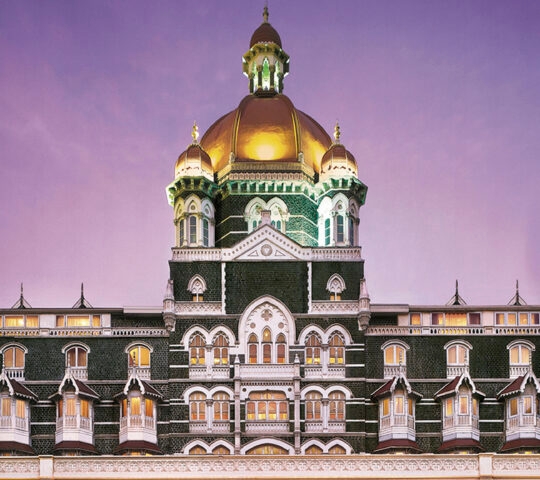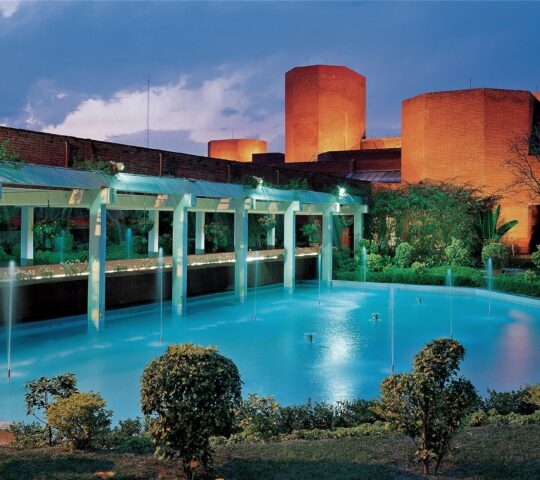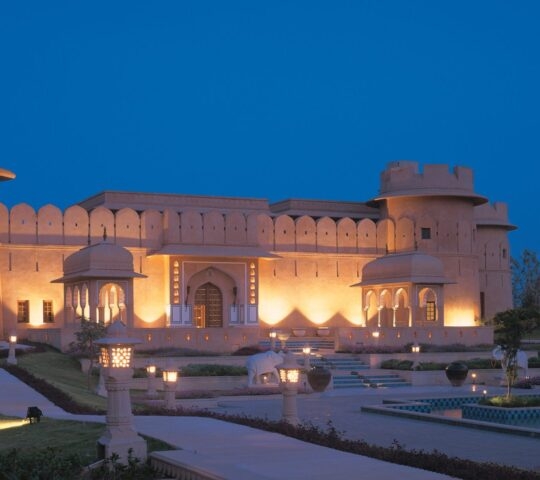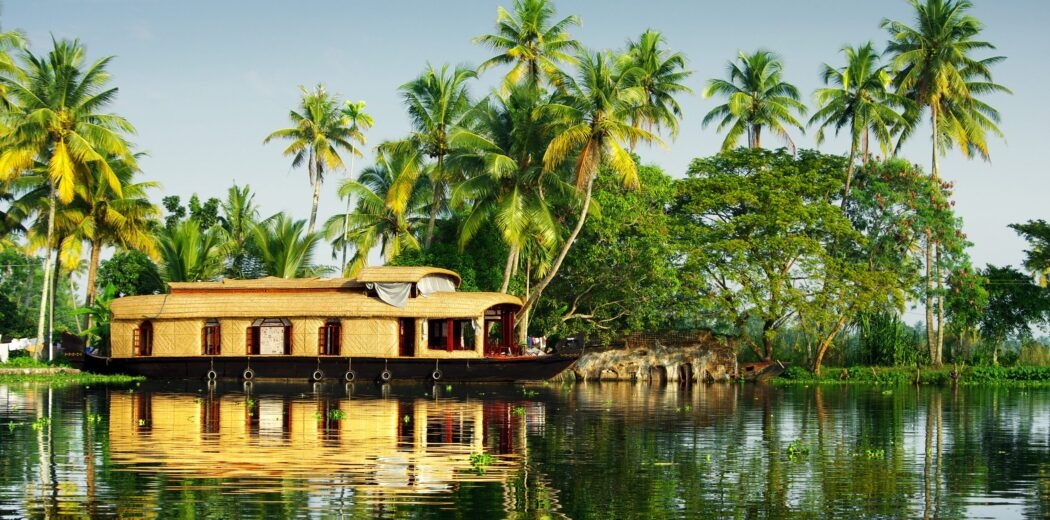A Luxury Grand Tour of India
From the grand palaces of Rajasthan to the lush backwaters of Kerala, this immersive adventure showcases India at its very best. Explore the buzzing cities of Mumbai and Delhi, the romantic, desert hubs of Jaipur and Udaipur, the religious and cultural capital of Varanasi and the showstopping landmark of the serene Taj Mahal.
Trip highlights
- Cruising the backwaters of Kerala on a houseboat
- Boat trip along the River Ganges in Varanasi
- The first time you lay eyes on the Taj Mahal
- In-depth tours of New Delhi, Jaipur and Udaipur
Bespoke trips with Jacada
We design one-of-a-kind journeys incorporating luxury in all its forms. Our bespoke trips include:
- Luxury accommodation throughout
- Private transfers
- Private tours and experiences
- Full support from your travel designer and concierge
- Help with restaurant recommendations and reservations

Itinerary in detail
Every Jacada trip is tailored to your personal preferences and interests. Below you’ll find a sample itinerary to inspire your own custom-designed journey.
Days 1–3
Two nights in the tropical backwaters of Kerala
With the Western Ghats towering to the east and the Arabian Sea flowing out from the west, Kerala is one of India’s most verdant and beautiful states. Crisscrossing this green lung are the backwaters that snake their way through towns and villages. Teeming with aquatic life and providing an invaluable resource to all who sit on their banks, these waterways have helped create an impossibly lush pocket of India, where palm-fringed beaches and tranquil waterways have earned it the moniker, God’s Own Country.

Where you could stay
Make it mine
Cooking
Cruising

A delicious cooking class at Philipkutty's Farm
Philipkutty’s Farm is a working farm that exists on reclaimed land from Lake Vembanad, below the level of the backwaters. Explore the farm, learning about the organic and sustainable methods used to grow coconut, spices and bananas, and fish for giant prawns and scampi in the canals. You’ll learn how to cook typical Kerala dishes which are well known for their fresh, bold flavours.

Peaceful houseboat cruising through the backwaters
Kerala is affectionately known as God’s Own Country, and as you glide along the network of lakes, rivers and canals that make up the backwaters, it’s easy to see why. A houseboat is a great way to explore rural Indian life while enjoying the shade of the verdant green surroundings. You’ll transfer to a smaller canoe to explore the very narrow canals.
Days 3–5
Two nights in Fort Cochin
Nestled on the north west tip of Cochin’s peninsula, Fort Cochin is a quaint coastal region with strong links to its colonial history. Having been under the rule of the Portuguese, Dutch and British, the town has a distinctly European feel, its narrow streets lined with cottages and bungalows.
During your time in the city you will explore Cochin’s Heritage Zone where colonial relics are scattered; the remains of Fort Immanuel and St. Francis church, both built by the Portuguese. You will also visit the Dutch Palace, Dutch cemetery, the synagogue in Mattancherry and the narrow streets lined with Dutch and British buildings, past antique shops and spice bazaars, before ending at the Chinese fishing nets to watch the sun set.

Where you could stay
See the dancers
Go by bicycle

An exciting Kathakali dance performance
Kathakali is a classical dance where the performers wear elaborate costumes and heavy make-up and is a popular form of entertainment in Kerala. Its name translates as ‘story play’ and the dances present themes derived from mythology and legend. We recommend arriving early so you can see the performers getting ready.

A peaceful cycling around Fort Cochin
Explore the areas of Fort Cochin and Mattancherry by riding down side streets, past the Chinese fishing nets, dhobi ghats (open air laundries), temples, churches, mosques, the beach and past spice warehouses — the air rich with the smell of dried ginger, cardamom and pepper. You’ll cycle for approximately 8 kilometers at a relaxed pace, with plenty of stops.
Days 5–7
Two nights of immersive experiences Mumbai
The capital of Maharashtra and India’s economic powerhouse, Mumbai, is a huge metropolis that’s home to over 22 million people. A melting pot of cultures, the affectionately named City of Dreams envelops all who come in a cloud of colour and sound, its energy undeniably contagious. Mumbaikars have a real love for life, which they live at quite a pace, and the best way to enjoy this city is to simply join them.
We can arrange for you to explore the city with at sunrise with resident guide, to fully understand its distinctive personality. Start at the grand Chhatrapati Shivaji Terminus as the newspapers are sorted for delivery, milk vendors cycle past with huge canisters of milk and freshly baked bread is transported to shops. You’ll arrive at Sassoon Docks in time to see the Kohli fishermen pull in with the morning catch before making your way to the colourful flower market and Crawford fruit and vegetable market, where it is estimated 3000 tonnes of produce is traded every day.
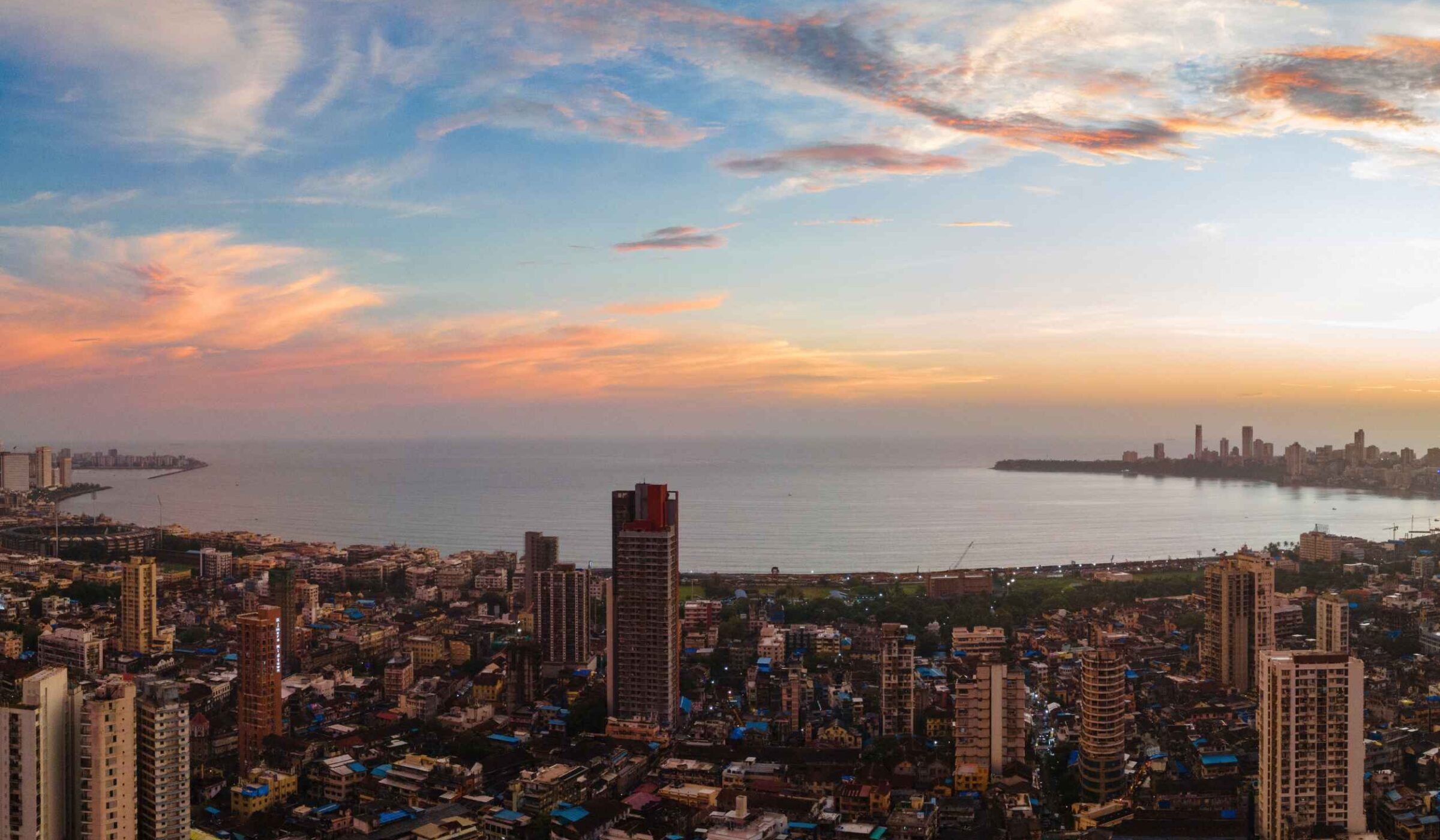
Where you could stay
Make it mine
Culture
History
Architecture
Mumbai fashion

The dabbawalas in action
When it comes to lunch, popping out for a sandwich is just not how they do it in Mumbai. The dabbawalas are a 5,000 strong group who deliver 200,000 lunch boxes every day to offices around the city. Every morning the dabbawalas call on homes to pick up dabbas, or lunch boxes, filled with home cooked food prepared for office workers. All the boxes look identical but a very well organised and precise system ensures they all end up at the correct desk. You’ll visit Churchgate Station to see this amazing process in action.

Visit the Mani Bhavan Gandhi museum
Visit the Mani Bhavan museum, dedicated to the life and work of Mahatma Gandhi. Housed in a private residence that was used by Gandhi during his visits to Mumbai, the collection follows the key events in his life and includes some of his personal items and photographs.
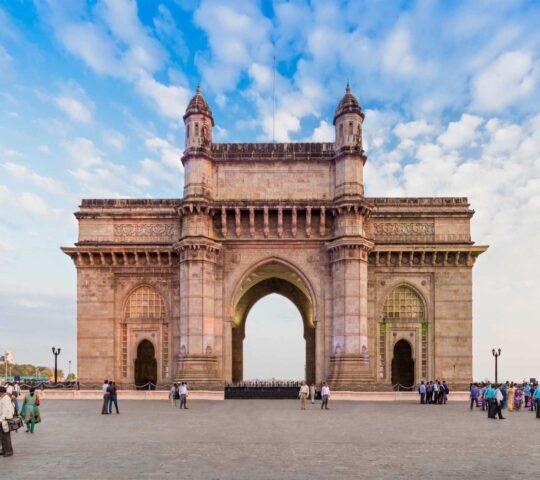
Explore diverse architecture at the Gateway of India and Kala Ghoda
The Gateway of India, was built in 1924 to celebrate the visit of King George V and Queen Mary, in the style of a Roman arch with architectural Hindu and Muslim motifs. Whilst serving as an arrival point from the west, its also where the British departed India in 1947. Explore the Kala Ghoda area’s Gothic and art deco buildings and wander the food stalls, cafes and galleries while watching cricket played out on the narrow streets. Visit Chhatrapati Shivaji Terminus, a huge Victorian Gothic station where thousands of people create an electric atmosphere.
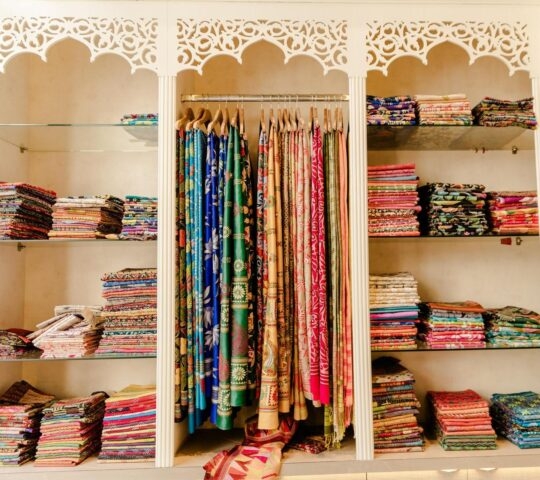
Fashion designers of Mumbai
Gain a comprehensive insight into Mumbai’s vibrant fashion scene. Starting in Colaba and Kala Ghoda, visit the renowned designer stores of Manish Malhotra, Sabyasachi Mukherjee, and Tarun Tahiliani. Continue to discover the Khadi Village Industries Commission or local boutiques showcasing fresh talents such as Fahd Khatri and Pooja Sukhraj.
Days 7–8
Sunset and sunrise in Varanasi
An ancient settlement on the banks of the Ganges, Varanasi is India’s spiritual capital and important among numerous faiths. Varanasi’s 84 ghats – stone embankments that step down into the river- are its most significant landmarks. Most are crowded with pilgrims performing ritual ablutions in the waters while a few are used solely for cremation. Sublime and sometimes shocking to visitors, the whole experience is utterly unforgettable.
The rest of the city is home to some 23,000 temples, the sandstone Ramnagar Fort and numerous centres of education, philosophy, music and art. Small-scale industries and household production employ most of Varanasi’s residents and its winding alleyways are one of the best places to find fine silks, carpets and crafts.

Where to stay
Make it mine
Sunset
Sunrise

An evening boat ride along the Ganges
Enjoy an evening boat ride along the River Ganges, the most sacred river in Hinduism. As you drift along the water you’ll witness life on the riverbanks as people come to bathe and offer worship. You’ll also experience the evening prayer ceremony and float your own lamps down the river.

An early old city walking tour and boat trip
This morning you will be taken for a boat ride on the River Ganges. After the boat ride you will meet a local expert on the ghats who will lead you on a private walking tour in the old city. On this walk you will see the back alleys, old havelis, temples, labyrinth of streets, street vendors and pilgrims that line banks of the Ganges.
Days 8–10
Two nights in the capital
With a population of over 18 million, Delhi is an international metropolis. Perhaps daunting at first sight, a little exploring soon reveals a rich, diverse and fascinating culture. Throughout most of its history, it has served as the capital of various kingdoms and empires, captured and rebuilt time and time again. Every dynasty left its mark and as you start to explore, you’ll discover reminders and relics from this colossal game of pass the parcel.
As well as centuries worth of history to explore, Delhi is also one of the best places in India to shop, try the many different styles of food and experience the buzz of a city where its millions of inhabitants are going about their daily business. And if weaving your way in and out of the rickshaws and cyclists ever starts to get too much, turn the corner and you’ll find a tranquil garden or a quiet enclave in which to stop, gather your thoughts and recharge.

Where you could stay
Make it mine
Old
New

A tour of Old Delhi
The old city is a labyrinthine maze of lanes overhung by a tangled mass of electric wires. Within this chaos lies a semblance of order – each lane in this area is dedicated to a particular item, rather like a department store. There are lanes selling bangles, grocers, items used in weddings, silverware, clothes, spices and shoes. Sharing the same space are vendors with carts, street side dentists, natural healers and cobblers. Explore in cycle rickshaws and on foot, walking the alleys.

Explore New Delhi
New Delhi was built as the seat of the British Indian government in the early 20th century. The architect, Edwins Lutyens, invented his own order of classical architecture creating grand buildings, such as Rashtrapati Bhavan (formerly known as Viceroy’s House), as well as the Lutyens Bungalow Zone, a green area of residential buildings with the most expensive real estate in India. You’ll also see Humayun’s Tomb, built in 1570 as the first garden-tomb on the Indian subcontinent.
Days 10–11
A night spent in Agra
It has graced the pages of books for centuries but nothing quite prepares you for seeing the Taj Mahal for the very first time. The ultimate symbol of eternal love, this is one of India’s most memorable and emotive sights. The Taj Mahal sits on the banks of the holy Yamuna River within 42 acres of beautiful gardens. The domed mausoleum sits above the river bank, surrounded by minarets on all four sides. It is flanked by a mosque and a guest house, both made from red sandstone and mirror images of each other. Rise early, meet your guide and visit during cool, calm hours of sunrise when the monument is bathed in the ethereal glow of the morning light.
There is no denying that the Taj Mahal, one of the Seven Wonders of the World, is one of the main reasons people visit Agra. However, it’s well worth lingering to explore the city’s magnificent fort that lies just to the west.

Where you could stay
Witness Agra's famous monuments

Experience the Taj Mahal at sunset
Visiting the Taj Mahal is a truly magical experience, particularly at sunset as the light plays on the marble of the tomb and its reflection shimmers in the water. Heartbroken after the death of his favourite wife, Mumtaz Mahal, during the birth of their 14th child, Shah Jahan set about building the world’s most beautiful monument in her honour. It took a workforce of more than 20,000 men 22 years to build, painstakingly making sure every slab of marble, precious stone and stroke of calligraphy was perfect.

A fascinating tour of Agra Fort
Just a few kilometres from the Taj Mahal sits the impressive Agra Fort, where the Mughal Emperor Shah Jehan was imprisoned by his son. Here you will see the art and crafting of the white marble that has made the area so famous, the Pearl Mosque and the Halls of Public and Private Audience.
A pause at Fatehpur Sikri en route to Jaipur

Explore the ancient city of Fatehpur Sikri
Just outside of Agra you’ll find the deserted, spectacular Mughal city of Fatehpur Sikri which was built by Emperor Akbar in 1569 and abandoned after just 15 years due to scarcity of water. See the graceful buildings including the Jama Masjid, the Tomb of Salim Chishti, the Panch Mahal and other palaces, many dedicated to his wives.
Days 11–14
Three nights in the pink city of Jaipur
The capital of Rajasthan, Jaipur is the state’s commercial hub and one of its most fascinating cultural destinations. The pace of life here is fast, but take your time you’ll find some of India’s most majestic palaces, atmospheric relics and learn the secrets of silk and cotton block printing at the Anokhi Museum, tucked away in a beautiful building on a quaint cobbled street.
During your time in the city, with your expert guide, visit the main sites including the sprawling City Palace with exclusive access to private quarters. The palace is pink, in keeping with the rest of the old city with an impressive facade and interiors in Rajput and Mughal styles of architecture. There’s also several museums, including a textile gallery. The well preserved Amber Fort is another site that simply cannot be missed. The ancient capital of the region has majestic ramparts rising steeply from the hillside. During your guided tour you’ll visit the Jagmandir, or Hall of Victory, with its glittering mirrors, the Jai Mahal and Temple of Kali.

Where you could stay
Make it mine
Around the bazaars
In the stars
Into the temple
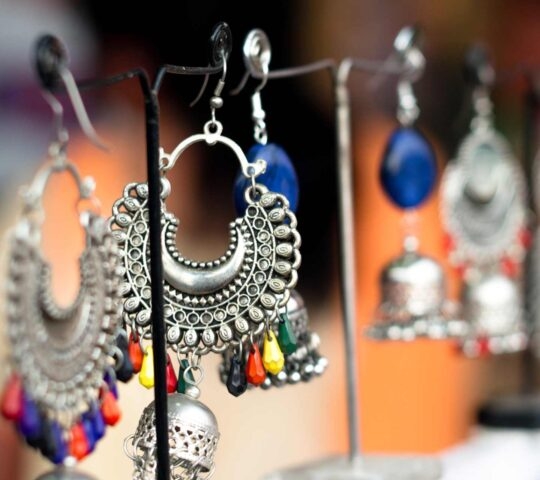
Wander the bazaars of Jaipur's old city
Explore the Badi Chaupad and Johari bazaars in Jaipur’s old city. Wandering through the maze of stalls and studios you’ll see craftspeople working on all sorts of forms of local art including zardozi embroidery, gota work, kinary, silver ornament work and precious and semi-precious stonework.

Visit the Jantar Mantar observatory
Maharaja Jai Singh II, the founder of the pink city, was an avid astrologer and built five observatories in northern India. The Jantar Mantar is the largest and houses what is believed to be the world’s largest sundial. The observatory consists of 14 geometric devices for measuring time, tracking constellations and observing the orbits around the sun.
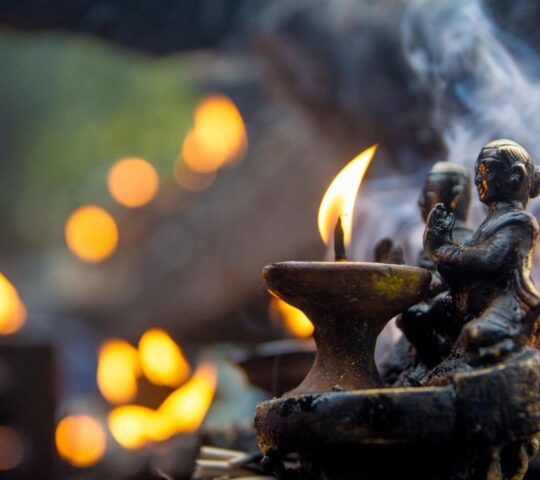
A puja (prayer) temple ceremony and market discovery
Visit a temple and partake in a short puja ceremony, where the temple priest will perform worship for you and offer blessings. You will also take a walk through Jaipur’s traditional markets filled with colourful fruit and vegetable stalls. Set against the backdrop of Sir Samuel Swinton Jacob’s vernacular architecture, the bustling alleyways are still where many merchant families live today.
Days 14-16
A final two nights in the romantic city of Udaipur
The scenic city of Udaipur sits surrounded on all sides by the wooded Aravalli Hills, its grand palaces reflected in serene lakes. Enjoy wandering the old city with your guide, winding your way through lanes that teem with cows, elephants and people. You’ll pass ancient bazaars , and witness a vibrant arts scene, finding intricate Mughal inspired miniature paintings, marble, silver craft and folk art hung on the walls of houses and pretty latticed haveli windows. It may seem busy, but tranquillity is never far away, be it boating on one of the lakes or a panoramic view from the hilltop Monsoon Temple.
During your stay tour the architectural wonder of Rajasthan; Udaipur’s City Palace on the banks of Lake Pichola. Several architectural styles including Moghal and Rajput are testament to the skill of its creators. A collection of towers, domes and arches face east to honour the royal family or ‘surya vansh’, descendents of the sun, along with the stunning bejewelled image of the sun at the entrance.

Where you could stay
Make it mine
Feast
Sail
Paint

A foodie experience with Minakshi Singh
Your hosts, Minakshi and Mahipal Singh will take you on a culinary journey to local markets, their kitchen in their home and to the table to feast on your creations. Learn about spices and vegetables and how to recreate these delicious dishes at home.

Set sail on Lake Pichola
See Udaipur in all its shimmering glory with a private boat trip around Lake Pichola at sunset. Enjoy scenic views of the lake and the mountains and float by important historical monuments; the City Palace, lakeside havelis, Jagmandir Island Palace and The Lake Palace.

Marvel at Jal Sanjhi water painting
Jal Sanjhi is the art of drawing on water, a popular ritual performed at temples dedicated to Krishna where coloured powders are used to draw iconic images onto water. A full canvas takes about five hours to create, and you’ll arrive in time to see the picture completed.
Once again Jacada delivered a wonderful holiday for us. Rachel and Gita listened to what we wanted to experience and made it happen. Their attention to detail is exceptional and everyone involved in our journey ensured that our experiences were perfectly executed. We had an amazing time and learned so much as we travelled from place to place. We were…
Why book with Jacada

Pesonalised design
We’ll plan your trip around your personal interests, tastes and preferences, providing honest advice based on first-hand knowledge.

Authentic experiences
Our expert guides and brilliant Concierges are hand-picked for their ability to bring your destination to life with care and passion.

Positive Impact
We seek out unforgettable experiences that benefit both local communities and the environment.
















